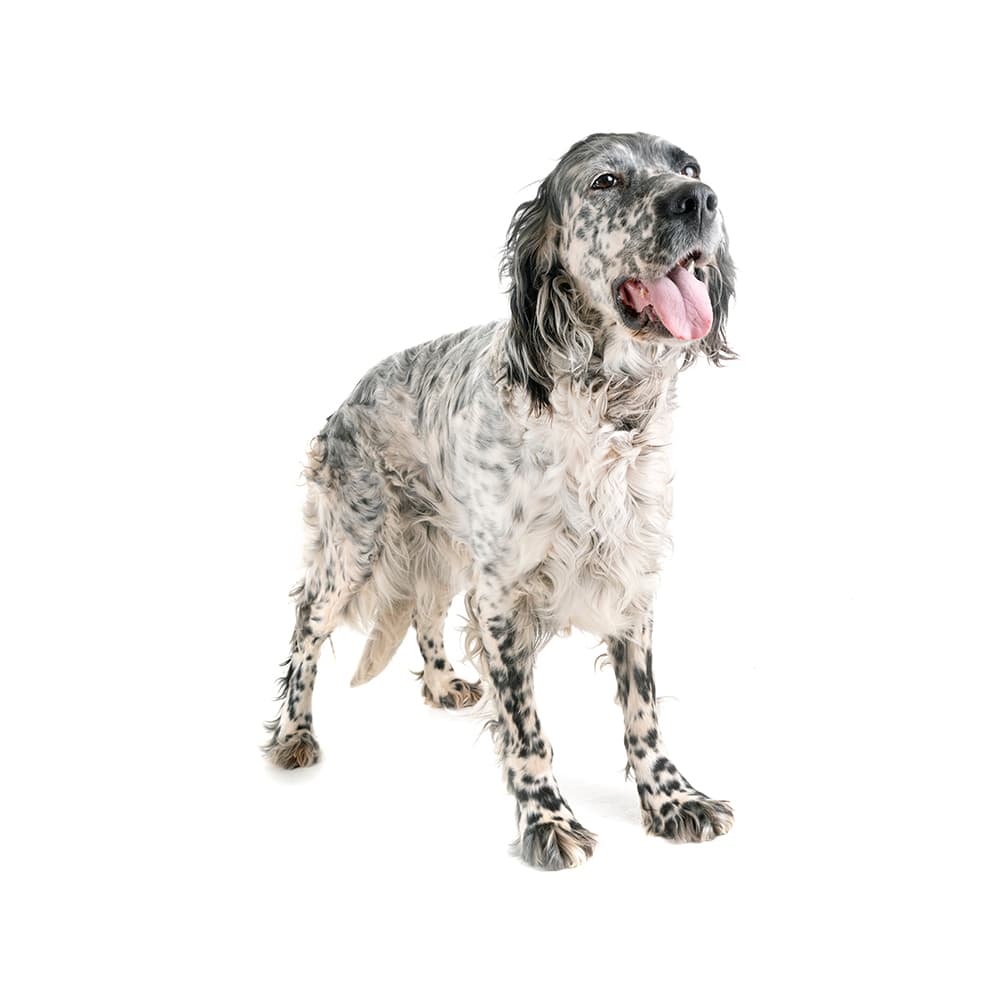Discover your dog's connection to this breed and 200+ others


Discover your dog's connection to this breed and 200+ others



The English Setter is one of the oldest breeds of gun dogs, with a history that traces back to the 14th century. They originated in England where they were used for hunting game birds, specifically upland birds such as quail and pheasant. The English Setter's ability to 'set' (or crouch low) to indicate the presence of game was a trait that was highly valued by hunters in a time before firearms were widely used. The breed as we know it today, however, was largely developed by two men, Edward Laverack and R. Purcell Llewellin, in the 19th century. Laverack spent over 50 years refining the breed, focusing on appearance and hunting capabilities, while Llewellin, using some of Laverack's dogs, selectively bred for improved hunting capabilities. The English Setter is a breed of dog known for its elegance, athleticism, and friendly personality. They are members of the Setter family, which also includes the Irish Setter and Gordon Setter.
English Setters can suffer from degenerative myelopathy, progressive rod-cone degeneration, and neuronal ceroid lipofuscinosis 8 (NCL-8). Genetic testing can assist veterinarians with diagnosis and proactive care, as well as help breeders identify affected and carrier dogs.
English Setters are known for their friendly and gentle nature. They are typically good with children and other animals, making them a great choice for families. They are also intelligent and trainable but can be a bit stubborn. English Setters are quite active and require regular exercise to prevent them from becoming bored and possibly destructive.
A canine genetic lineage is a group of individuals or entire breeds that descended from common ancestors predating modern breed formation. Often these lineages are associated with a ‘type’ of dog with a unique historical working role and associated behaviors (e.g., herding, scent hunting, etc.).
The Pointer-Spaniel lineage encompasses both pointer and spaniel breeds. They were both bred for their specialized hunting abilities in Europe. Pointers locate game and freeze in a stance, called “pointing”, to indicate to their hunter that birds are close by. Spaniels were bred to find game in underbrush and retrieve it. Both pointer and spaniel breeds were bred to enhance their strong senses, trainability, and endurance as these are advantageous in a hunting partner. Spaniels and pointers are known for their strong work ethic, ability to work closely with humans and agility. These dogs’ ability to work closely with their hunters makes them an asset during a hunt because they follow direction well and know how their hunters want them to proceed.
Example breeds with ancestry from this lineage include English Cocker Spaniel, Irish Red Setter, and German Shorthaired Pointer.
English Setters have a unique 'speckled' coat, which comes in various colors such as blue belton (black and white), orange belton, lemon belton, liver belton, and tri-color.
Despite their hunting origins, English Setters are often described as 'gentlemanly' or 'aristocratic' because of their graceful movement and elegant appearance.
The "Llewellin Setter" is not a separate breed, but a strain of English Setter that's been selectively bred for hunting prowess.
Recommended by top vets with decades of experience
21 breeds
64 genetic health markers
50 genetic trait markers
